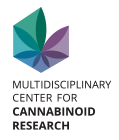Citation:
Abstract:
Endocannabinoid/endocannabinoid-like (EC/EC-like) are natural endogenous compounds which have been found to affect MRSA pathogenicity. Our previous studies showed that EC/EC-like was able to impair staphylococcal biofilm formation and maintenance as well as to alter biofilm-associated virulence factors. In the present study, we investigated the combinatory effect of the selected EC/EC-like with a natural antimicrobial agent, poly-L-lysine, on cariogenic bacteria Streptococcus mutans growth and biofilm formation. Among four tested EC/EC-like, only two, anandamide (AEA) and oleoylethanolamide (OEA), exhibited synergistic combinatory effect with poly-L-lysine against S. mutans. We attribute this distinct effect to differences in the fatty acid chain structure of the selected EC/EC-like compounds. Moreover, AEA exerted a specific antibiofilm mode of action against S. mutans by effecting total inhibition of biofilm formation while still allowing bacteria viability. Finally, we postulate that the presence of EC/EC-like and poly-L-lysine could enhance the permeability and efficacy of each other via hydrophobic and electrostatic interactions with the S. mutans membrane. In conclusion, we assume that a combination of endogenous natural compounds such as EC/EC-like and poly-L-lysine may benefit oral hygiene by preventing dental plaque. © 2020 Mark Feldman et al.
Notes:
cited By 1
